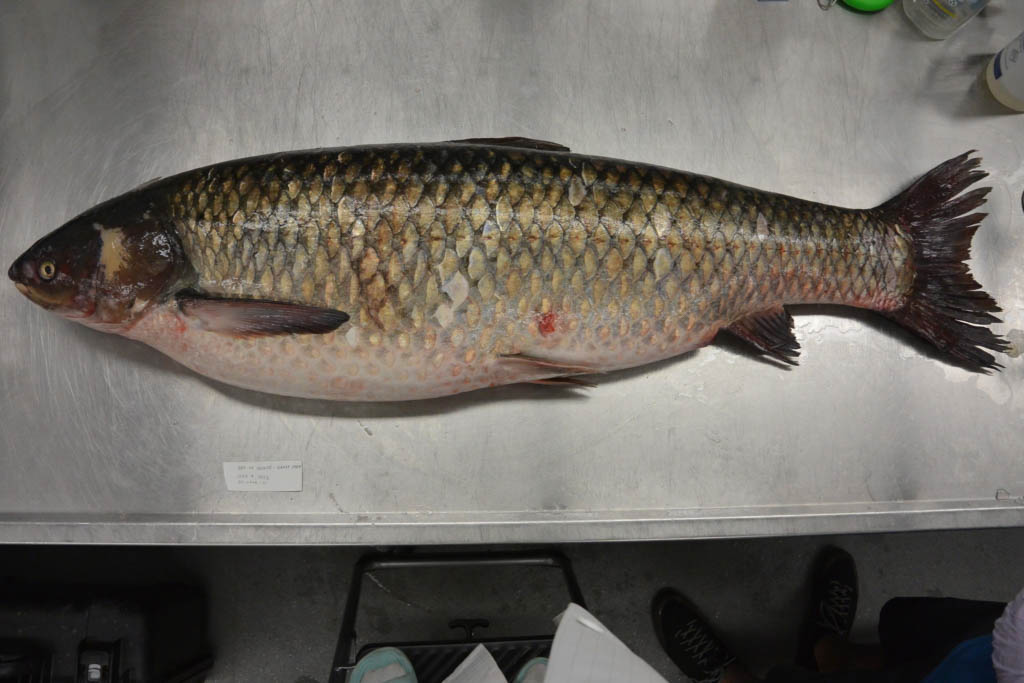A commercial fisher caught a single adult female Grass Carp in Lake Ontario’s Bay of Quinte on July 3. The fish weighed 20.996 kg and measured 1.16 m in length, with no signs of recent spawning.
Response teams, along with an Ontario Natural Resources and Forestry team, searched the Bay of Quinte for more Grass Carp. There were none discovered. This is the 31st Grass Carp discovered in Canada since the Asian Carp program began in 2012.
Because of their ability to reproduce quickly, outgrow, and outcompete other fish for food and habitat, grass carp are a major threat to the Great Lakes basin. Please report any sightings of Grass Carps or other invasive species in Canada.
Responding to aquatic invasive species
Either federal or provincial governments can respond to prevent an aquatic invasive species from establishing itself permanently or spreading in a local habitat.
The Aquatic Invasive Species Regulations provides the authority for response actions. A basic response plan could include:
- confirming the suspicious organism’s identity
- assessing the extent of the invasion
- quarantining the infested area, if possible
- reviewing and choosing available control options
- applying the chosen control option(s)
- adapting the response strategy as needed
An effective response plan could also include stakeholders that have:
- experience
- strong partnerships
- good communication
- collaboration expertise
A successful response aims to permanently remove all members of an aquatic invasive species population from the affected waterbody while taking in account potential impacts on fish and fish habitat. Federal, provincial and territorial governments may take action when such an activity is feasible and likely to succeed.
Each province and territory works with different partners to manage issues caused by aquatic invasive species.
In order to check every bay and every river in Canada, we rely on citizens to report sightings of potential aquatic invasive species. We study each field report submission and figure out the identity of the species.
You can assist us in early detection and monitoring with your field report by following these steps.
- Identify the species.
- Note the exact location (GPS coordinates) and the observation date.
- Take photos.
- Take note of identifying features.
- Contact us to report an aquatic invasive species.
Use this link to report any findings: provides all the Provinces/Territories contacts.





